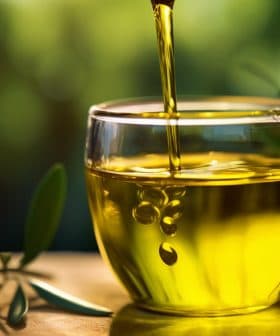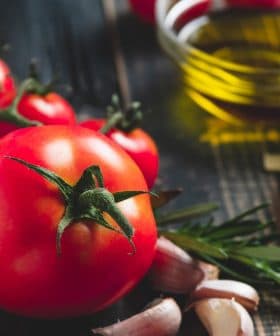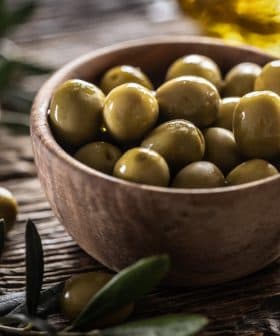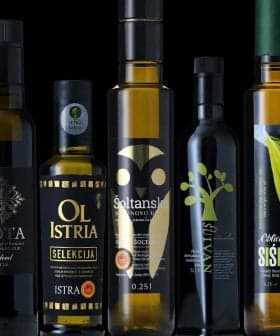 6.5K reads
6.5K readsBusiness
Olive Oil Sales Slump in Spain and Italy Amid Rising Prices
Sales of extra virgin olive oil are slowing in Spain and Italy due to rising prices and reduced consumption, with a recent study showing an 11 percent drop in Spain and a 69 percent increase in virgin olive oil sales. The rise in prices has been attributed to low expectations for the next harvest and a lack of stocked olive oil from the previous crop, leading to concerns about the impact on the olive oil market in both countries.
Extra virgin olive oil sales are slowing in Spain and Italy, the world’s two largest olive oil consumers, as prices rise and households reduce consumption.
The rise in extra virgin olive oil prices has largely been attributed to low expectations for a second consecutive harvest paired with a dearth of olive oil stocked from the previous crop.
New research on the sale of oils and fats in Spain found that extra virgin olive oil sales dropped by 11 percent in the first nine months of 2023, while virgin olive oils grew 69 percent.
See Also:High-Priced Olive Oil Fuels Thefts in Greece, Farmers RespondAccording to government data, more than half of the olive oil produced in Spain is extra virgin.
The study, conducted by the researchers at the University of Jaén, also showed an 86 percent increase in olive pomace oil sales.
According to the research, the approach of Spanish consumers is shifting toward lower grades of olive oil and smaller, more affordable bottles and containers. Other cheaper oils, such as sunflower oil, are gaining in popularity.
The European Union observatory noted how extra virgin olive oil prices at origin skyrocketed in Spain during the 2022/23 crop year. In the benchmark market of Jaén, the price at origin rose from €4.16 per kilogram in October 2022 to €8.32 per kilogram one year later.
During the previous crop year, extra virgin olive oil prices remained more or less stable, between €3.10 and €3.95 per kilogram. They ran only slightly above the five-year average of €2.85 per kilogram.
Similar trends are reported for extra virgin olive oil prices in Italy. In Bari, the country’s benchmark market, the price at origin rose from €5.08 per kilogram in October 2022 to €9.08 one year later.
In the last few weeks, Italian extra virgin olive oil prices cooled to €8.10 per kilogram, but industry observers warn that prices could rise again.
While the price increased in both markets, extra virgin olive oils in Spain and Italy are sold at similar prices at retail.
European Union experts believe prices will rise further after the harvest is complete.
“At the beginning of the campaign, there is a specific moment in which the supply will be greater than the demand in the short term. That’s when prices will drop,” Juan Vilar, a strategic consultant for the olive oil sector, told Olive Oil Times.
“Then, as demand increases [in reaction to falling prices and as the harvest ends, meaning olive oil stocks reach their highest point], it is very likely that prices will rise again,” he added.
With the backdrop of reprieve from rising prices, the olive oil group of the Italian Association of the Edible Oil Industry (Assitol) said it anticipates national production to reach 289,000 tons in the 2023/24 crop year.
If it comes to fruition, the yield would be about 20 percent above the previous season but slightly more than the five-year average of 275,000 tons.
Still, these yields are significantly below the approximately one million tons of olive oil the Italian industry sells yearly on the domestic and international markets.
As a large part of the imported extra virgin olive oil comes to Italy from Spain, the latter’s low production figures will directly impact the Italian olive oil market.
Still, Italian producer associations believe that the turmoil might increase consumer awareness about extra virgin olive oil’s organoleptic qualities and health benefits.
“This anomalous campaign is the perfect opportunity to reflect upon olive oil consumption,” Andrea Carrassi, Assitol’s general director, told Olive Oil Times.
“Moreover, it is an opportunity to reposition extra virgin olive oil [on the market] in the coming years, erasing once and for all this label of commodity that, unfortunately, has been attributed to extra virgin olive oil despite its extraordinary characteristics,” he added.
The association highlighted how large retailers sold the product in Italy at bargain prices for many years. Supermarkets nationwide used to attract customers by offering promotional prices for extra virgin olive oil, which critics viewed as artificially low and recouped those losses with sales of other higher-margin products.
Industry observers, long critical of this tactic, believe it affected consumer awareness about extra virgin olive oil’s quality.
“The general perception is that the price of olive oil is low because its value is low, thus encouraging consumers to seek the lowest price,” Carrassi said. “Now the picture appears completely different.”
“The reduction in olive oil quantities and the increase in prices, within a scenario of inflation and economic uncertainty, could lead consumers away from this product, orienting them towards less expensive alternatives,” he added.
Recent research published by the Circana business observatory, cited by Il Sole 24 Ore, noted how promotional olive oil sales in the first ten months of 2023 dropped to €69 million in value, €28 million less than the previous year.
According to Assitol, the discount strategy is now faltering because of the new market conditions.
“Is it really just a cost problem, or is it time to change our way of considering extra virgin olive oil,” Carrassi said.
“In our opinion, olive oil is much more than a simple condiment; it is certainly not just another dietary fat,” he added. “It is a true elixir of health, and it should be communicated and perceived as such, highlighting how unique it is compared to other fats and condiments.”
David Granieri, president of Unaprol, Italy’s national producers’ association, agreed. “The time of quality olive oil sold below cost is finally over,” he wrote in a note.
According to Granieri, it is crucial to help the consumers “understand how significant it is to consume quality extra virgin olive oil and how important it is to pay its fair price, which is the current price.”
Granieri also noted how a fair price would “allow the whole product chain to continue working and keep waving the flag of Italian quality.”
Assitol and Unaprol are asking for a broad institutional communication campaign to raise awareness.
“We need to make consumers understand that this product is worth more because it delivers more in terms of well-being and taste,” Carrassi said.
“If we examine the actual extent of the price increases, it amounts to just a few cents more per day. Our health is certainly not worth so little,” he added.
Unaprol remarked how consumers in Italy started to reduce their extra virgin olive oil consumption years ago.
“Today, each Italian consumes 7.1 kilograms of olive oil each year, less than the 11.4 kilograms reported in Spain and the 10.3 kilograms in Greece,” Unaporl said. “It is far less than what happened in the first years of the 21st century when Italian consumption was 12 kilograms per capita.”
According to the International Olive Council, Italy’s olive oil consumption declined in the last five years to an average of 492,000 tons compared with the 566,000 reported on average in the previous five years.
In Spain, the average of the last five years was 519,000 tons against the 486,000 tons reported as average in the previous five years.









